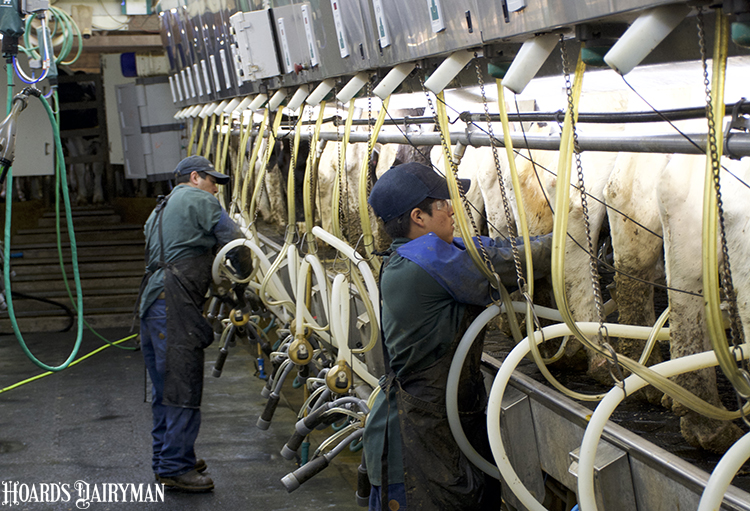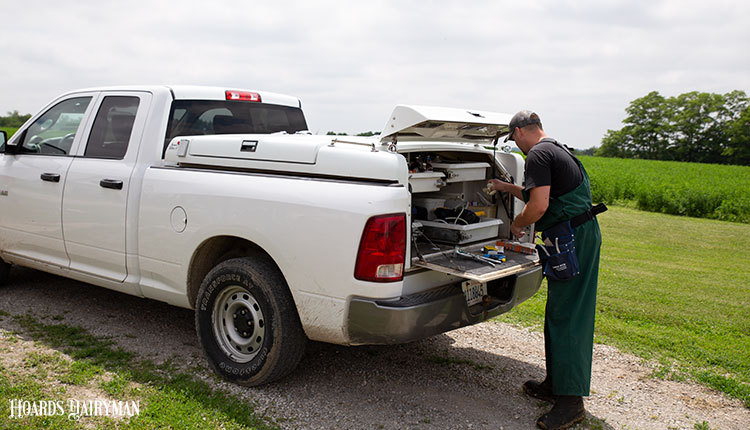
In the early 20th century, tuberculosis was a scourge for cattle. However, in recent decades it’s become extremely rare, with ramifications only being felt by a handful of infected herds. But with COVID-19 raising everyone’s awareness of fast-moving outbreaks, a rare phenomenon in animal agriculture — human-to-cattle transmission of TB — has become a potential worry for dairy producers.
Historically, the medically recognized transmission routes for tuberculosis (TB) have included animal-to-animal, animal-to-human, and animal product-to-human, but recent cases point to a new route of transmission — human-to-cattle. This new possibility raises many questions, the largest one being, what, if anything, should dairy farmers do to handle this?
Three cases to watch
Cattle most commonly are infected with Mycobacterium bovis (M. bovis). But occasionally, they can be infected with Mycobacterium tuberculosis (M. tuberculosis). In reality, a number of cases of animal-to-human (including cattle-to-human) TB transmission have occurred over the past 70 years. But three probable cases of human-to-animal transmission in the U.S. since 2013 have amplified interest and concern from human and animal TB experts:
• Case 1: A dairy employee testing positive for tuberculosis in North Dakota prompted the testing of all cattle on the farm, which found a whole genome sequence match between the human and infected cow for that specific M. bovis strain.
• Case 2: In Wisconsin, a dairy employee tested positive with tuberculosis. The entire herd was tested twice for tuberculosis, with no disease detected. Three years later, a TB infected cow identified at slaughter was found to originate from this farm. Whole genome sequencing confirmed a match to the human case three years prior.
• Case 3: M. tuberculosis was detected in a crossbred dairy calf being transported from New Mexico to Texas. Texas animal health requirements include TB testing. Humans were again the suspected source, but public health authorities were unable to identify an infected human tied to the cattle operation.
For more in-depth coverage on this developing situation, click to read, “Human-to-Cattle Mycobacterium tuberculosis Complex Transmission in the United States.”
Given these cases, human-to-cattle TB transmission is now a real source of disease concern that requires a One Health, collaborative effort between state animal and public health officials and producers. To help develop best practices for dairy farmers, and animal health and public health officials, the National Milk Producers Federation has convened a bovine tuberculosis working group that includes state animal and public health officials, dairy producers, USDA officials and representatives from the Centers for Disease Control and Prevention. The working group’s goal is to develop resources and best practices for state animal and public health officials in conducting TB investigations should a human TB case be suspected to be connected to a dairy farm.
For dairy farmers, best practices will be developed to minimize the risk of animal to human and human to animal TB transmission. Through this, we can help bridge the gap often existing between animal and public health during these investigations.
New category to FARM
Along with that effort, the National Dairy FARM Program has added a new “silo,” FARM Biosecurity. Through a cooperative agreement with the USDA National Animal Disease Preparedness and Response program, the FARM Program is integrating the already existing Secure Milk Supply/enhanced biosecurity program and adding everyday biosecurity to ensure the dairy industry is working to keep their herds and the milk supply safe. Farmer TB resources developed by the working group will be a natural addition to the new FARM Biosecurity “silo.”
Though tuberculosis was once the most prevalent infectious disease in cattle and swine in the United States and caused more losses in the early 20th century than all other infectious diseases combined, it is thankfully rare in cattle today. The National Tuberculosis Eradication program began in 1917 in an effort by the USDA, state animal health agencies, and U.S. livestock producers to eradicate the disease from dairy herds. Today, due to pasteurization and the national eradication program, less than 1% of cattle responding to the skin test. Together, dairy farmers and the entire industry can do their part to keep this seemingly dormant threat from ever awakening, keeping at least one potential threat safely at bay.








